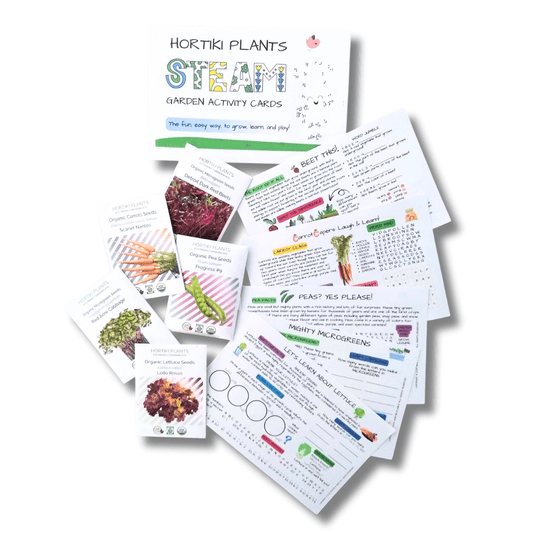Starting a Kids' Garden: A Beginner's Guide
Hortiki Plants
Gardening is a fantastic activity for kids, offering numerous benefits such as physical activity, learning about nature, and developing responsibility. In this beginner's guide, we'll walk you through the basics of starting a kids' garden, from choosing the perfect garden spot to planting and nurturing your first seeds.
Benefits of Gardening for Kids
Gardening is more than just a fun outdoor activity; it’s an educational experience that promotes physical, mental, and emotional well-being. Here are some key benefits:
- Physical Activity: Gardening helps kids stay active and improves their motor skills. Digging, planting, watering, and weeding are all great exercises.
- Learning About Nature: Kids learn about plant biology, ecosystems, and the environment. They get to see firsthand how plants grow and what they need to thrive.
- Developing Responsibility: Taking care of a garden teaches kids about responsibility and patience. They learn that plants need consistent care and attention to grow.
Choosing a Garden Spot
Selecting the right location for your kids' garden is crucial for success. Here are some tips to help you find the perfect spot:
- Sunlight: Choose a spot that receives at least 6-8 hours of sunlight daily. Most vegetables and flowers need plenty of sunlight to grow well.
- Soil Quality: Good soil is essential for healthy plants. Look for soil that is rich in organic matter and drains well. You can improve soil quality by adding compost.
- Accessibility: Ensure the garden is easily accessible for kids. It should be close to a water source and have enough space for kids to move around comfortably.
Simple Plants to Grow
For beginners, it’s best to start with plants that are easy to grow and maintain. Here are a few recommendations:
- Radishes: These are quick to grow, often ready to harvest in just a few weeks.
- Sunflowers: Tall and vibrant, sunflowers are fun to watch as they grow and follow the sun.
- Marigolds: These flowers are easy to grow and can help deter pests from your garden.
Gathering Supplies
Before you start planting, gather the essential gardening tools and supplies. Here’s a basic list:
- Gardening Gloves: Protects hands from dirt and potential cuts or scrapes.
- Small Trowel: Perfect for digging small holes for seeds and plants.
- Watering Can or Hose: Ensures your plants get the right amount of water.
- Garden Markers: Helps keep track of what you’ve planted and where.
Planting Tips
Now that you have your garden spot and supplies, it’s time to plant! Follow these steps for a successful start:
- Prepare the Soil: Loosen the soil with a trowel and remove any weeds or rocks. Add compost to enrich the soil.
- Plant the Seeds or Seedlings: Follow the instructions on the seed packet for planting depth and spacing. Gently place seeds in the soil and cover them lightly.
- Watering: Water the newly planted seeds or seedlings gently but thoroughly. Keep the soil moist but not waterlogged.
- Label Your Plants: Use garden markers to label where each type of plant is growing.
Conclusion
Starting a kids' garden is a rewarding and educational experience. It encourages kids to spend time outdoors, learn about nature, and develop a sense of responsibility. With the right garden spot, easy-to-grow plants, and basic supplies, you'll be well on your way to creating a thriving garden that your kids will love. Happy gardening!
By incorporating these tips and steps, you and your kids can enjoy the many benefits of gardening. Remember, the journey of watching plants grow from seeds to mature plants is a wonderful learning experience that can spark a lifelong love of nature. So, get started today and watch your kids' garden flourish!



